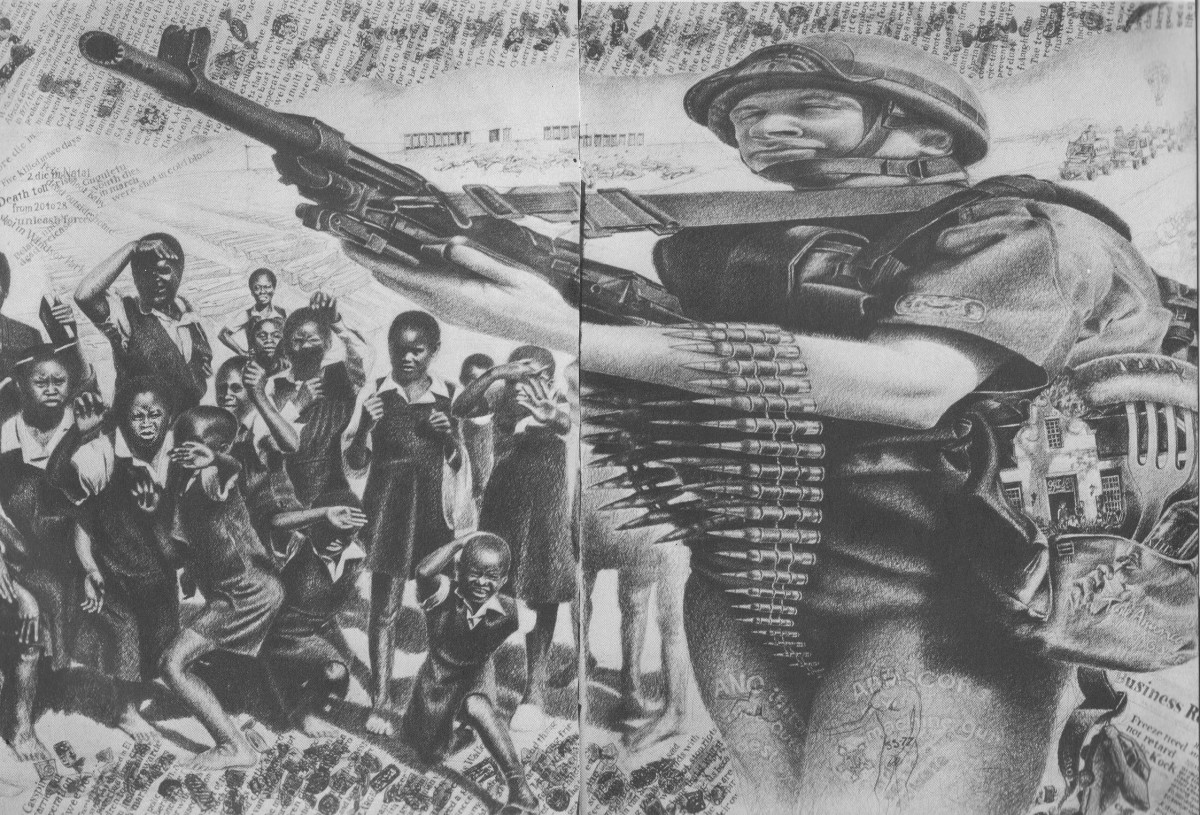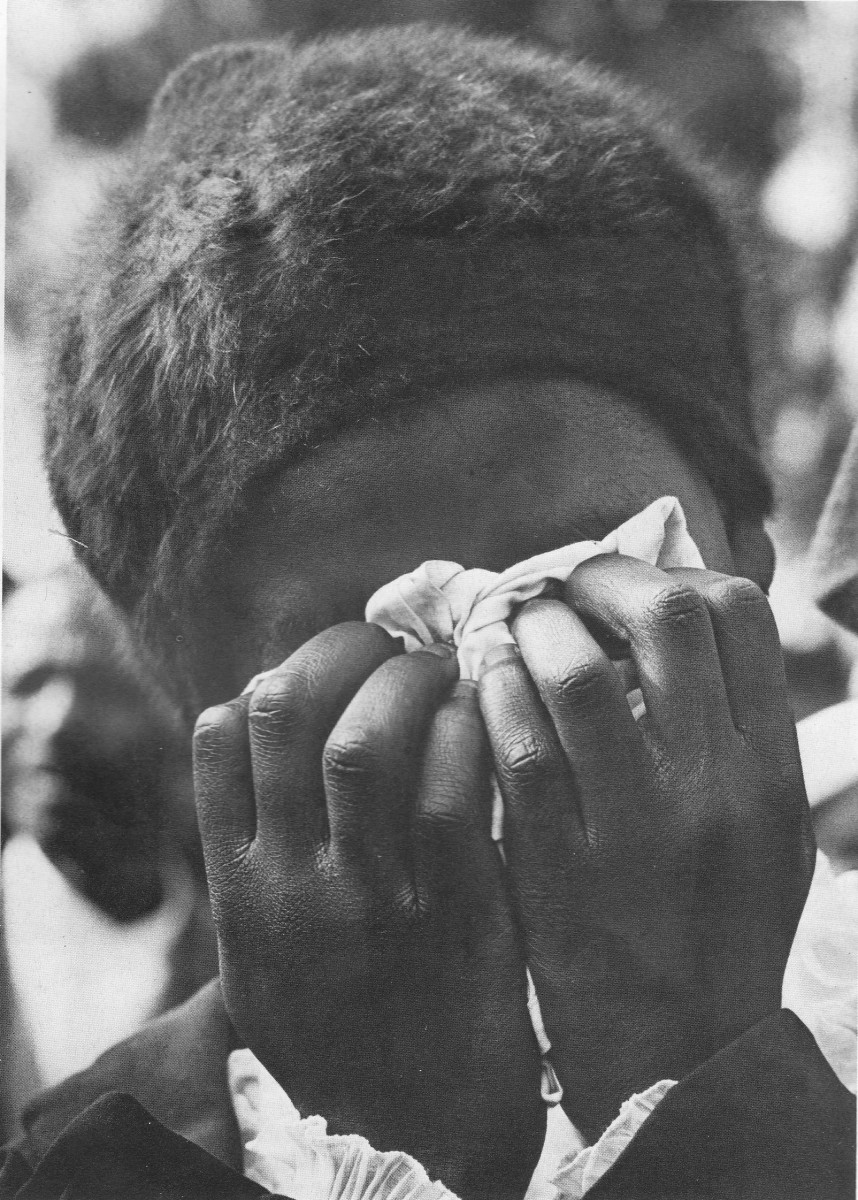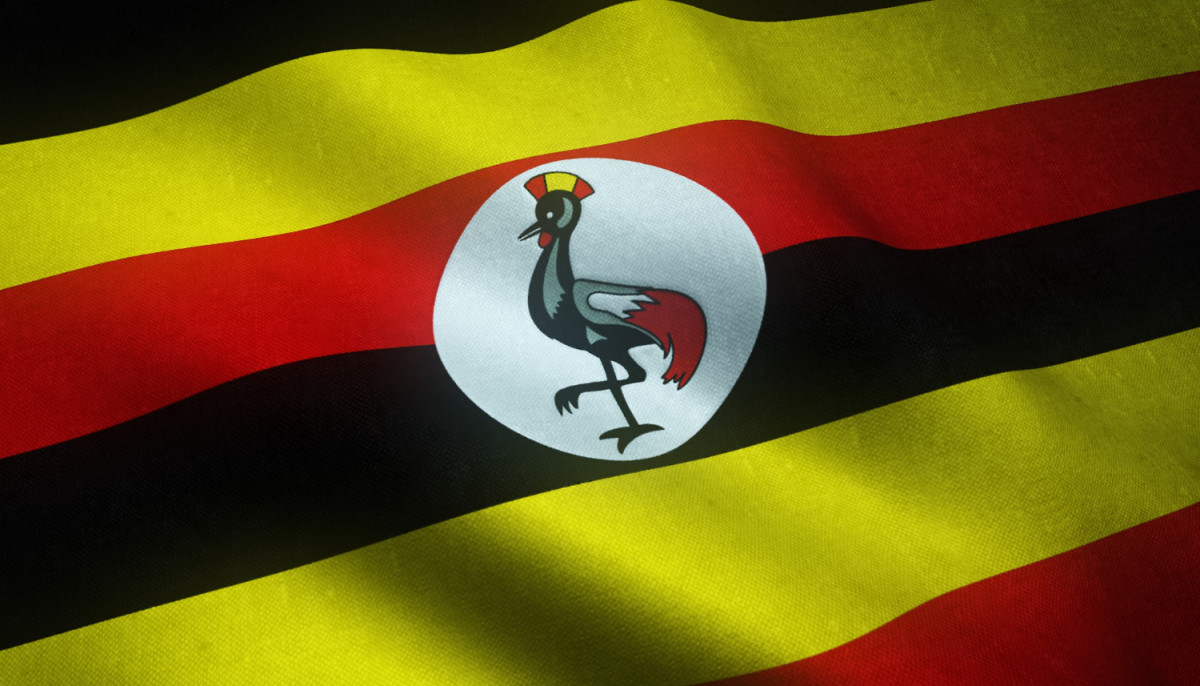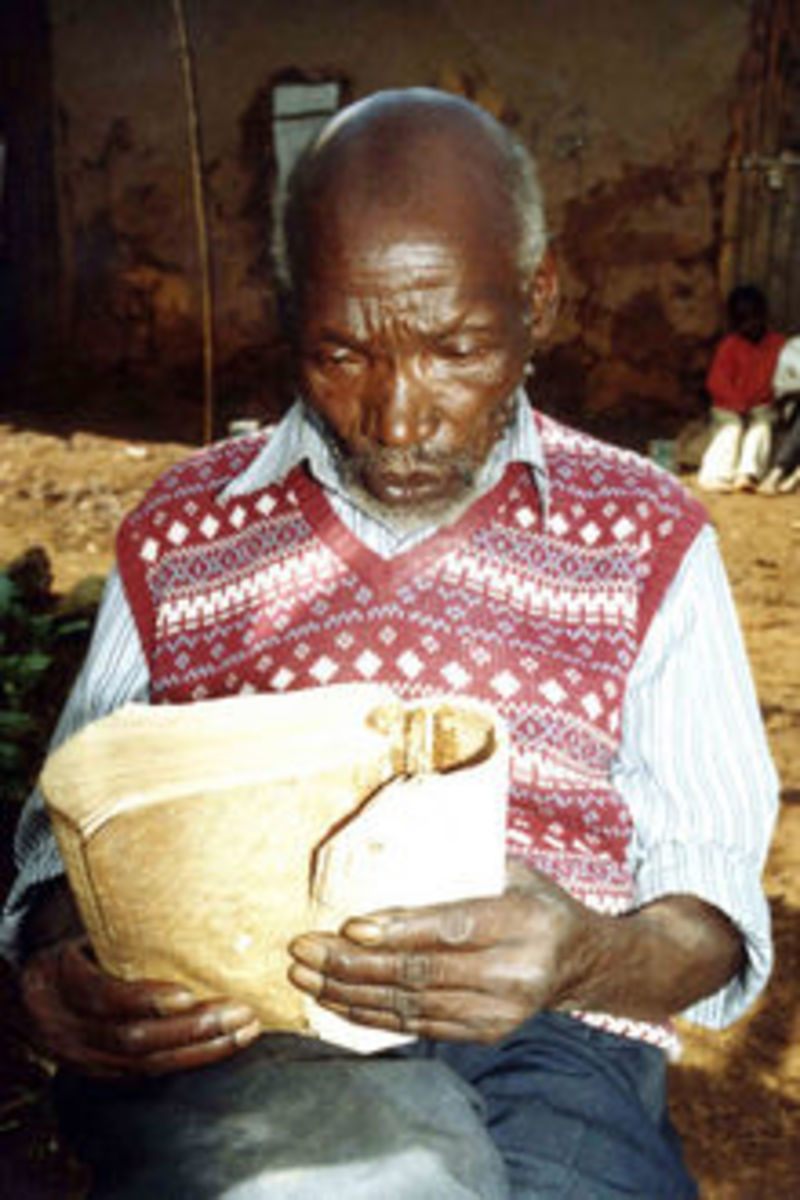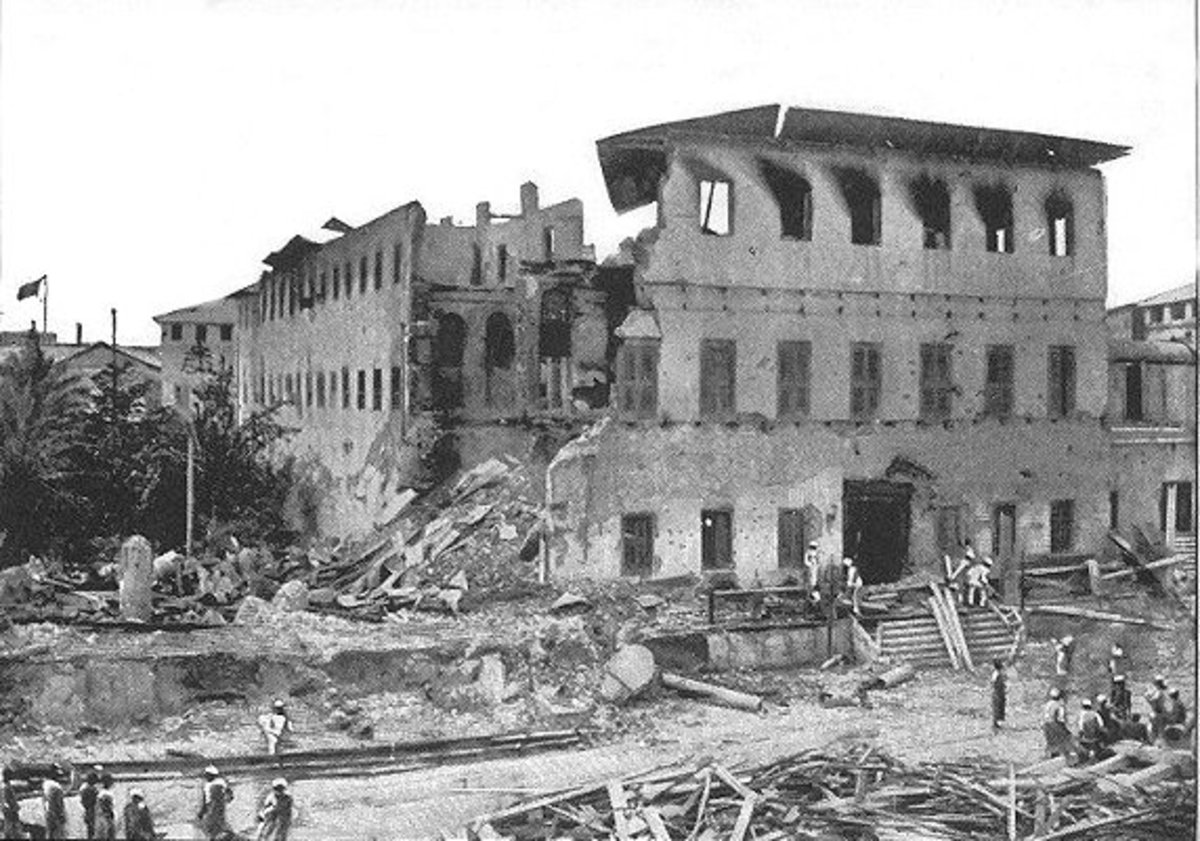Liminal Spaces: Barry Buzan's Sectors Theory and Somali Refugee Dynamics in the Horn of Africa
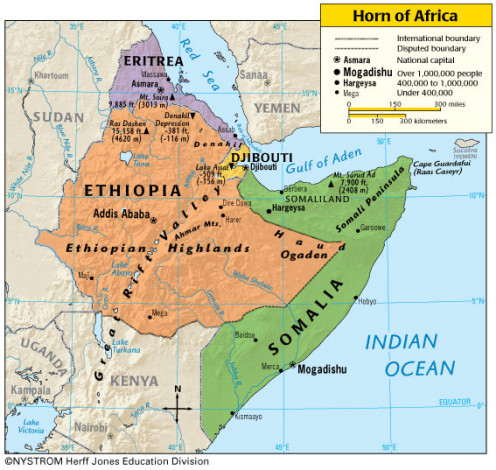
Somalia is currently undergoing one of the worst refugee crises in African history. In 1991, the collapse of President Mohamed Siade Barre’s military dictatorship, which ruled the country for twenty-two years, came to an end, leading to a massive wave of displaced citizens that continues to the present day. Beyond the humanitarian scope of this ongoing crisis, refugee movements originating from Somalia represent the liminal quality of regional security in the Horn of Africa, as explained by Barry Buzan’s sectors concept.
Beginnings of Discord
Like many modern day states in Africa, Somalia’s history is closely tied to European colonialism. Until 1941, Somalia was administered by Britain and Italy. Years of political tensions between the two led to Somalian independence in 1960.[1] After a series of fleeting governments, Abdirashid Ali Shermarke became president in 1967, and not long after later he was assassinated. The new leader, Mohamed Siad Barre, went on to rule Somalia for over two decades, ushering in a brutal military regime modeled on socialist principles. A few months after he was deposed in 1991, the power vacuum left by his absence plunged the country into years of anarchy and factional fighting[2], laying the framework for the start of the ongoing Somalian civil war. This has led to several revolutionary movements which continue to be one of Somalia’s most destructive conflicts. According to the UNHCR, the effects of the civil war, ongoing clan conflict, and a devastating famine that hit Somalia in 2011 have contributed to vast movements of refugees and internally displaced persons. As of January 23, 2013, the number of refugees originating from Somalia number 1.023 million[3], with most of these asylum seekers residing in refugee camps in Kenya, Ethiopia, and Yemen. People displaced internally within Somalia are even greater, at roughly 1.36 million.[4] In spite of the protracted conflict, there have been recent positive developments to stabilize the country’s government structure, most notably with the recent election of a new President and Prime Minister.
Redefining security: Barry Buzan’s Sectors
While most of the literature referencing refugees focuses on the hardships associated with seeking asylum across national borders, less research looks at the role of refugee movements on wider processes of national political transformation and regional security. Analyzing the multifaceted effects of refugees in Somalia requires an approach that goes beyond the traditional state-centric level of analysis[5], which has been the main intellectual tradition in international relations since its founding. This redefinition of security is a fundamental argument of the Copenhagen School of thought, whose central scholars include Barry Buzan, Ole Weaver, and Jaap de Wilde. The Copenhagen School incorporates constructivist and realist perspectives to form a middle ground between these two very different intellectual traditions, and no one did more to advance this school of thought than Barry Buzan.
In his groundbreaking work People, States and Fear, Barry Buzan advocated a reconceptualization of security, going beyond the traditional definition of security to include a focus on regional influences. He also outlined other aspects that were previously not given priority when assessing security. Therefore, Buzan looks at security from a holistic perspective in order to arrive at a more informed and accurate conclusion. Buzan proceeded to identify five different sectors that can provide this broader framework: military, political, economic, societal, and environmental.[6]
These five sectors are a core concept when evaluating Buzan’s theories. While crucial to understanding his redefinition of security, he is quick to point out that these sectors do not operate in isolation from each other. These sectors cannot explain security separately[7]; each one is related intimately to the other, forming complex interconnections that when analyzed as a whole[8] reflect a more inclusive and complete nature of security:
(a) Military: The first of Buzan’s sectors of security is perhaps the most obvious one. As Ole Weaver, Buzan’s colleague and one of the founders of the Copenhagen School, reminds us: “…we should look out for the changing place of war in the emerging world order if we are to discern the future of security studies.”[9] Military threats can affect all components of the state, putting into question the ability of the state to protect its citizens.[10] The use of force makes the military sector perhaps the most tangible of Buzan’s sectors.[11] The importance for the state lies in harmonizing its defensive and offensive capabilities, as well as balancing its perception of other states’.
(b) Political: Unlike the military sector, the political sector is more ambiguous and difficult to determine. Threats to state sovereignty make up the core of this sector. Military threats, according to Buzan, are exclusively part of the military sector, therefore threats of a non-military nature are included here. These political threats are aimed at undermining the states organizational stability[12], which could take many forms: this can include pressuring the government to take certain stances on particular policies, the encouragement of secessionist movements, and the disrupting of the state’s political fabric. Buzan stresses that the state’s national identity[13] and organizing theology are the main targets of political threats. The establishment of the autonomous region of Somaliland through rebel action and the resultant loss of control exerted by Mogadishu over this region can be seen as such a political threat
(c) Economic: This sector is concerned with “access to the resources, finance and markets”[14] necessary to sustain acceptable levels of welfare and state power. Such threats can be hard to determine due to the nature of economics itself, which, at least in capitalist societies, is marked by varying degrees of risk, aggressive competition and uncertainty. The economic sector is also one of the prime examples of how sectors interact with each other: in the case of Somalia, the start of the 1991 civil war coincided with the Central Bank of Somalia’s lack of control over Somali monetary and fiscal policy[15], but as of 2009 this situation is being ameliorated.
(d) Societal: Societal security examines the threats and vulnerabilities that affect patterns of communal identity and culture.[16] This is one of Buzan’s most difficult to discern sectors. Migration can be a central threat to communal identity, since it has the capacity to alter the ethnic, linguistic, cultural, and religious identities of the population.[17] The tensions created by these uneasy interactions can lead the state to change legal protections of migrants or even erect physical barriers to emphasize differentiation from the society it seeks to exclude. [18]
(e) Environmental: Environmental security concerns the maintenance of the earth’s biosphere as the essential support system which is crucial for all human activity. Paradoxically, Buzan states that many environmental security issues, such as the multifaceted effects of pollution, fall outside of the realm of security[19] and are much better placed in the economic sector. Environmental issues threatening humankind on a large scale, as in the case of countries like Bangladesh which are prone to flooding, can directly impact security as infrastructure and rule of law disintegrate as a result.
These sectors act as an interrelated web through which a state’s level of security can be analyzed, however, this is not enough to fully understand the dynamic nature of domestic politics. Buzan has emphasized the regional aspect to understanding security:…“one cannot understand the national security of any given state without understanding the international pattern of security interdependence in which it is embedded.”[20] A state’s security, therefore, is not only defined at the state level, but in regional clusters. Like Buzan’s sectors, the security of one state can influence and impact the other. Nowhere is this truer than the Somali refugee movement, which has given rise to refugee camps that have impacted the domestic and international policies of countries beyond Somalia’s borders.
Buzan’s Sectors and the Somali Refugee Diaspora
The Somali refugee movements are perhaps the most complex movements of its kind anywhere in the world. The total population of Somali origin refugees exceeds the one million mark. The world’s two largest refugee camps, Dadaab in northeastern Kenya and Dollo Ado in southeastern Ethiopia[21], host mostly Somali refugees. Due to the trans-border nature of these movements, a state-centric level of analysis is not ideal for studying the myriad, complex processes which influence refugee politics. Also helpful would be a sectorial overview of Somali security that incorporates regional aspects, especially when viewing Somali relations with neighbors Kenya and Ethiopia.
Military Conflict and security
Military threats are arguably the most obvious[22] and tangible threats to a state’s security. Since the end of the Said Barre regime, military conflict has become a regular occurrence in Somalia. After Said Barre fled the country, several factions started vying for control. This factional fighting led to defined political divisions within Somalia, with the north controlled by the Somali National Movement (SNM), while most of the south, and the capital city of Mogadishu, coming under the control of the United Somali Congress.[23]
The Somali National Movement was formed in the early 1980’s by Somalis living in London, with the express purpose of overthrowing the Said Barre dictatorship. In 1982, the SNM chose Dire Dawa, Ethiopia, as the location for its headquarters, from which it conducted guerrilla raids in various locations in Somalia. This emphasizes the regional aspect Buzan highlights in his theories. In ensuing years, the SNM became one of Somalia’s most powerful insurgency groups. Their military operations had an adverse effect on large swaths of the population, triggering massive internal displacement, migration, and refugee movements within and around the region. A few years after the SNM was formed, the United Somali Congress emerged as another major group trying to gain control. [24] The fighting between these and other groups contributed to the lack of central governance and political stability, and is a prime example of how the various sectors as defined by Buzan interact and influence each other. Nowhere do we see this more than in the wider effects of these conflicts on the local population, many of which were forced to flee across the border for safety.
Government Failure: Political Instability and Security
Lack of central governance has been the defining characteristic of Somalia’s political structure since 1991[25], when the nation’s military dictatorship under Mohamed Said Barre was toppled. Recent positive developments in 2012 have seen the creation of the first central government Somalia has had in nearly two decades. The ensuing chaos has led to massive swaths of southern Somali territory to be overrun with the local cell of the al-Qaeda organization. While parts of northern Somalia have seen relative stability, remained peaceful, the situation in the south is often prone to factional fighting, kidnapping, murder, and threats to foreigners, especially aid workers. Even with UN intervention in 1993 to combat the mass starvation plaguing the country, security in the region remained very fragile. From 1991 to 2001, Somalia went through 14 different governments.[26]
These conditions have enabled the al-Qaeda Al-Shabaab insurgency to increase its overall political influence. These insurgents have led to the displacement of millions of refugees fleeing the south and into neighboring countries, illustrating how refugee movements are tied to this political security dimension. However, this issue has been complicated further by the wider political and regional interactions brought on by the governments of Ethiopia and Eritrea, who were supporting opposite sides in the Somali conflict. Thee displaced people highlight the multidimensional processes which affect refugee movements as well as the international policies of other countries. Simply looking at what occurs militarily inside Somalia’s borders would not have been enough to fully explain Somali security. Therefore, Buzan’s sectors of analysis approach allow for a much better understanding of the myriad processes which impact security in the wider Horn of Africa.
Environmental Disaster: Famine and Security
Closely tied to the Somali political sector is the environmental sector, which has led to one of the most challenging chapters of Somalia’s history. The United Nations declared a famine in southern Somalia in mid-201l. The famine affected just over three million people, but while drought proved to be a major factor in this environmental disaster, other factors such as rising food prices and political instability[27] coalesced to produce one of the worst famines in recent history, triggering a mass refugee exodus into camps in Ethiopia, Kenya, and Yemen, among others. The 2011 famine is a prime example of Buzan’s concept of an environmental sector, also highlighting the impacts of environment on security in the wider Horn of Africa.
One of the main causes of the famine was the massive drought that affected the entire region. Rainfall levels for 2010 in the region were at its lowest levels in 50 years. Equal importance was given to the concomitant rise in global food prices at around the same time. Somalia is heavily dependent of importing food as a food source. Rural farmers’ loss of livestock, combined with the effects of the drought and rising food prices lead to a steep, rapid decline in rural income. In addition, underlying political tensions intensified the wider implications of security on the region. The famine-affected area was controlled by the Al-Shabaab insurgency. The presence of this group led to massive civil displacement from the south. Humanitarian aid workers were prohibited from entering Al-Shabaab-controlled space, leading Somalia to be declared the most dangerous place in the world[28] for aid workers in 2010. The economic realities and terrorist cell infighting has augmented the effects of the famine on the Somali diaspora currently residing in neighboring Kenya, Ethiopia, and Yemen. These interconnections are a prime example of how various sectors interact with each other.
Conclusion
As Barry Buzan’s sectors theory has shown, going beyond the traditional state-centric level of analysis that has dominated international relations thought for so long offers valuable insights into the fragile, liminal quality of Somalia’s security. This liminality is reflected in the instability of all five of Buzan’s sectors in this region, where lack of governance and constant factional fighting has contributed to an unstable, fluidic, and ultimately dangerous atmosphere in the Somali peninsula. One of the most important personifications of the connections between these various sectors are the refugee movements emanating from this conflict-ridden region, movements that act as a unique microcosm through which the liminal quality of security in the Horn of Africa can be assessed.
References
[1]Aristide Zolberg, et al., Escape from Violence: Conflict and the Refugee Crisis in the Developing World, (Oxford: Oxford University Press, 1992), 106.
[2] Central Intelligence Agency. "Somalia." cia.gov. Central Intelligence Agency, n.d. Web. 5 Feb. 2013.
[3] United Nations High Commissioner for Refugees. “Somali Refugees in the Region.” Web. 25 Jan. 2013.
[4] Ibid.
[5] Marianne Stone. Security According to Buzan: A Comprehensive Security Analysis. Groupe d’Etudes et d’Expertise “Sécurité et Technologies, (2009:)1-3.
[6] Barry Buzan and Albert Mathias, “Securitization, Sectors, and Functional Differentiation. “Paper for panel 5 stream 7, ISA Asia-Pacific Region Inaugural Conference. Brisbane, 29-30 September 2011.
[7] Marianne Stone,Security According to Buzan: A Comprehensive Security Analysis. Groupe d’Etudes et d’Expertise “Sécurité et Technologies, (2009): 1-3.
[8] Ibid.
[9] Ole Weaver, “Politics, Security, Theory.” Security Dialogue 42 (2011) : 477.
[10] Barry Buzan, People, States and Fear. (Boulder, L. Rienner, 1991):119.
[11] Marianne Stone. Security According to Buzan: A Comprehensive Security Analysis. Groupe d’Etudes et d’Expertise “Sécurité et Technologies, (2009): 4.
[12]Barry Buzan, Jaap de Wilde, and Ole Weaver. “Security: A New Framework for Analysis.” (Boulder, L. Rienner,1998):141.
[13] Ibid.
[14] Barry Buzan, “New Patterns of global security in the twenty-first century.” International Affairs (Royal Institute of International Affairs, 67 (1991): 445-44.
[15] Central Bank of Somalia. “History.” Web. Accessed 11 Feb. 2013.
[16] Barry Buzan, “New Patterns of global security in the twenty-first century.” International Affairs (Royal Institute of International Affairs, 67 (1991): 447- 450.
[17] Ibid.
[18] Ibid.
[19] Marianne Stone, Security According to Buzan: A Comprehensive Security Analysis. Groupe d’Etudes et d’Expertise “Sécurité et Technologies, (2009): 6.
[20] Ibid.
[21] UNHCR. Number of refugees in south-east Ethiopia swells to 170,000. Web.19 Oct. 2013. Accessed 12 Feb. 2013.
[22] Marianne Stone. Security According to Buzan: A Comprehensive Security Analysis. Groupe d’Etudes et d’Expertise “Sécurité et Technologies, (2009): 4.
[23] Somali Civil War.” Global Security. n.d. Accessed 12 Feb. 2013.
[24] Ibid.
[25] Muddassar Ahmed, “Somalia rising after two decades of civil war and unrest,” Al Arabiya. Web. 8 Aug. 2012.
[26] “Somali Civil War.” Global Security. n.d. Accessed 12 Feb. 2013.
[27] Merry Fitzpatrick and Daniel Maxwell, “The 2011 Somalia famine: Context, Causes, and Complication,” Global Food Security 1 (2012):5.
[28] Ibid.


